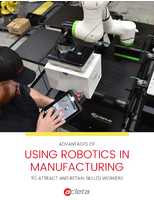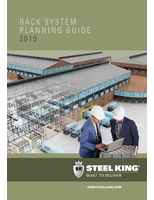Standards Initiative tackles rare earth material challenges.
Press Release Summary:
ASTM Subcommittee F40.04 has established standards development agenda to support efficient and safe production, utilization, and recycling of rare earths. Activities will help address needs through creation of standards that assist product manufacturing and support the safe procurement of resources. According to ASTM Committee F40 chairman, speed and collaboration of pragmatic process foster swift and effective offering of relevant, high-quality solutions to real-time issues.
Original Press Release:
ASTM International Standards Initiative Tackles Rare Earth Material Challenges
W. CONSHOHOCKEN, Pa.–As rare earth materials play an increasingly critical role in the growth of global industries, an ASTM International subcommittee is gearing up to address challenges across the life cycle of these vital resources. ASTM Subcommittee F40.04 on Rare Earth Materials held its most recent meeting in April and has established a standards development agenda aimed at supporting efficient and safe production, utilization and recycling of rare earths.
Rare earth materials are alloys and compounds that include one or more of a set of 17 chemical elements, including the 15 lanthanides, plus scandium and yttrium. These advanced materials support the manufacturing of innovative products such as smartphones, LCD screens and night vision goggles. Rare earths help make these and many other technologies smaller, lighter and more affordable. With their unique magnetic, catalytic and luminescent properties, rare earth elements are also at the core of the development of clean energy technologies, including the manufacture of wind turbines, solar panels, hybrid/electric vehicle batteries and energy-efficient lighting.
Stimulating the Worldwide Supply Chain
The increased demand for rare earth materials has converged with supply bottlenecks, resulting in a looming shortage of these resources throughout the worldwide high-tech, energy and automotive sectors. To better ensure that rare earths are more readily available for industry use, public and private sector stakeholders are focusing on ways to diversify supplies. Strategies include improving existing rare earth mining activities, tapping into new global sources, and easing demand through more efficient manufacturing techniques and increased recycling/reuse.
ASTM F40.04, which is part of ASTM International Committee F40 on Declarable Substances in Materials, will help address these needs through the creation of standards that assist product manufacturing and support the safe procurement of resources. F40.04’s upcoming activities are focused on the following areas:
Chemical and physical identification, characterization and testing;
Classification and terminology;
Recycle, reuse and recapture of materials;
Material standards to assist in efficient use of available resources;
Environmental considerations for selection and use;
Material selection standards and guides;
Alternative material selection and effectiveness testing;
Labeling and end-of-life considerations; andÂ
Guides for supply chain management and risk management.
Taco van der Maten, product manager for X-ray fluorescence at PANalytical in Almelo, the Netherlands, and chairman of ASTM Committee F40, says “To drive growth and ongoing competitiveness across numerous industries, global manufacturers rely on access to the rare earths and other critical materials that are at the heart of product innovation. Through the development of standards that drive the efficient use of available resources and streamline recycling processes, ASTM F40.04 will contribute to a healthier rare earth supply chain and a sustainable, long-term supply of materials.”
“The pragmatic ASTM process provides the speed and collaboration to enable diverse international stakeholders to swiftly and effectively offer relevant, high quality solutions to the real time issues confronting the rare earth materials market,” adds van der Maten.
Protecting Our Energy Future
Underscoring the importance of rare earth materials to clean energy growth, the U.S. Department of Energy has established the Critical Materials Institute (CMI) at its Ames Laboratory in Ames, Iowa. The institute will bring together leading experts from academia, national laboratories and the private sector to find solutions to help avoid a rare earth supply shortage.
Dr. Alex King, director of the Ames Lab and head of the new CMI, comments, “As we pursue our mandate to eliminate barriers to the advancement of clean energy, standards that improve efficiency in the use of rare earth materials and make it easier for recycling will be an important strategy in helping fulfill our mission. We look forward to consulting with the technical experts at ASTM and working cooperatively to achieve our common goals.”
ASTM Subcommittee F40.04 welcomes participation from all interested parties, particularly industry material researchers and innovators using rare earth materials as well as those involved in electronics and recycling. For more information on becoming an ASTM member, visit www.astm.org/JOIN.
ASTM International is one of the largest international standards development and delivery systems in the world. ASTM International meets the World Trade Organization (WTO) principles for the development of international standards: coherence, consensus, development dimension, effectiveness, impartiality, openness, relevance and transparency. ASTM standards are accepted and used in research and development, product testing, quality systems and commercial transactions
ASTM Committee F40 Next Meeting: Nov. 13-14, 2013, November Committee Week, Jacksonville, Fla.
Technical Contact: Taco van der Maten, PANalytical B.V., Almelo, The Netherlands, Phone: +31-546-534-372; taco.van.der.maten@panalytical.com
ASTM Staff Contact: Alyson Fick, Phone: 610-832-9710; afick@astm.org
ASTM PR Contact: Barbara Schindler, Phone: 610-832-9603; bschindl@astm.org




